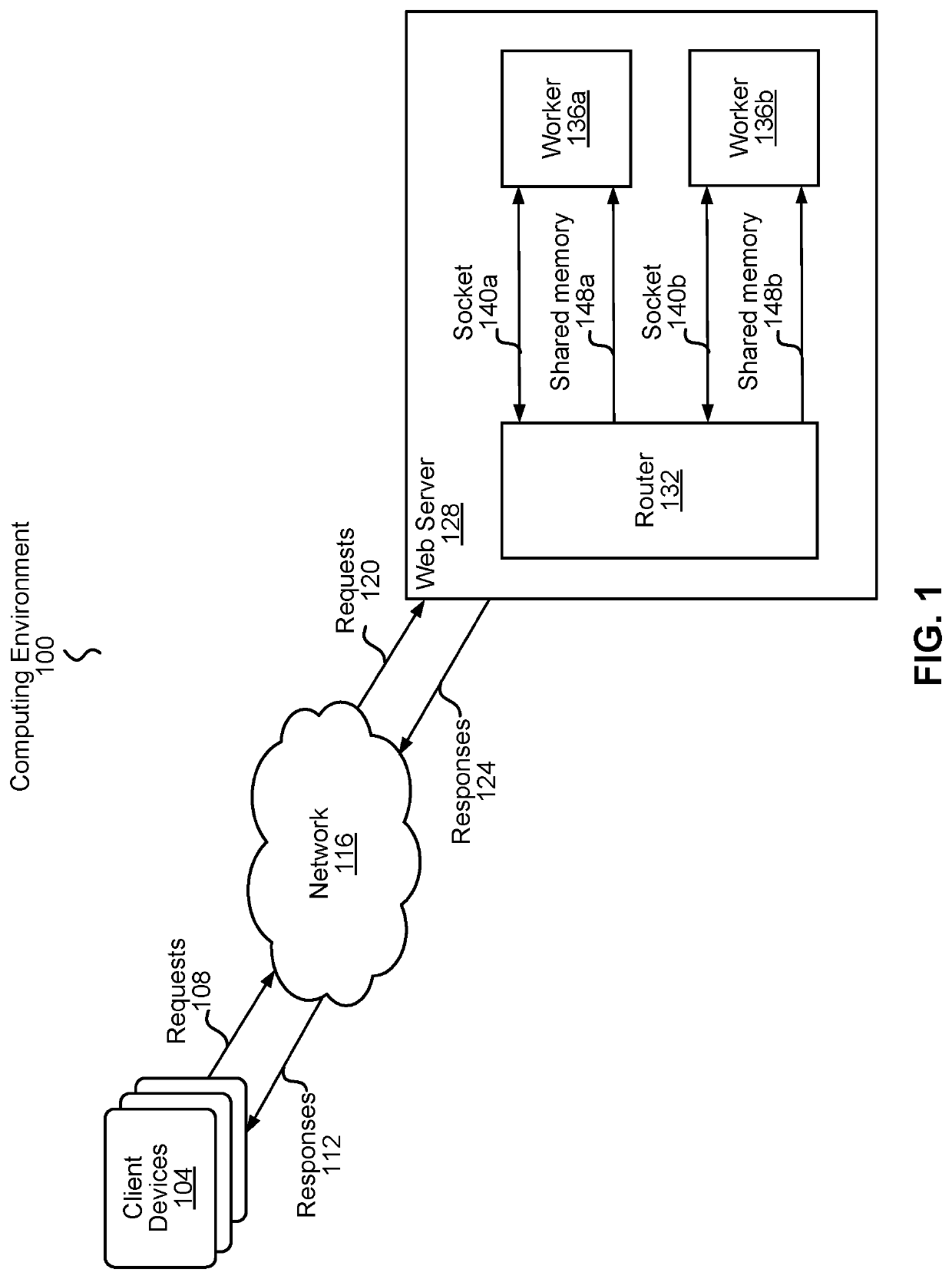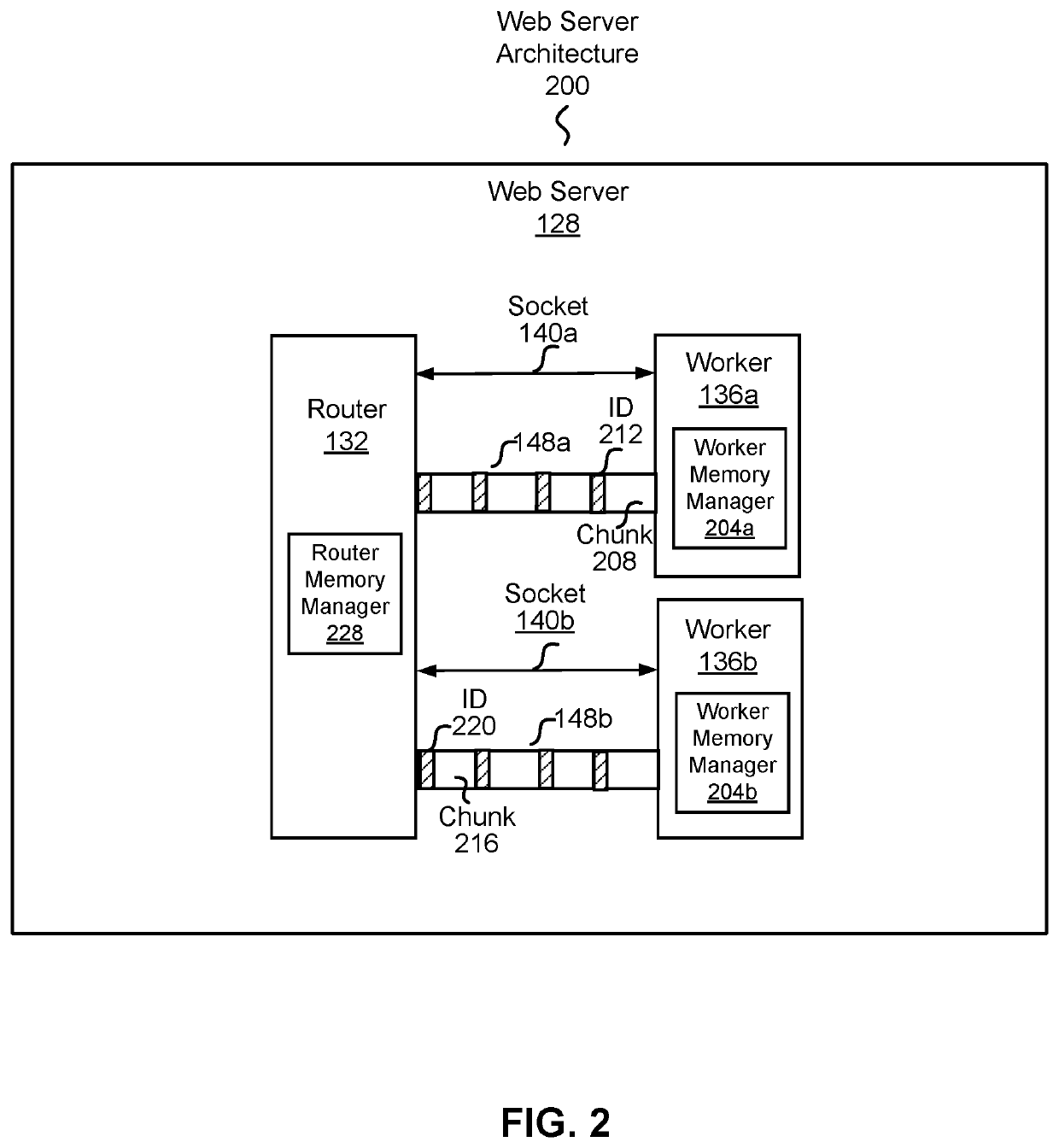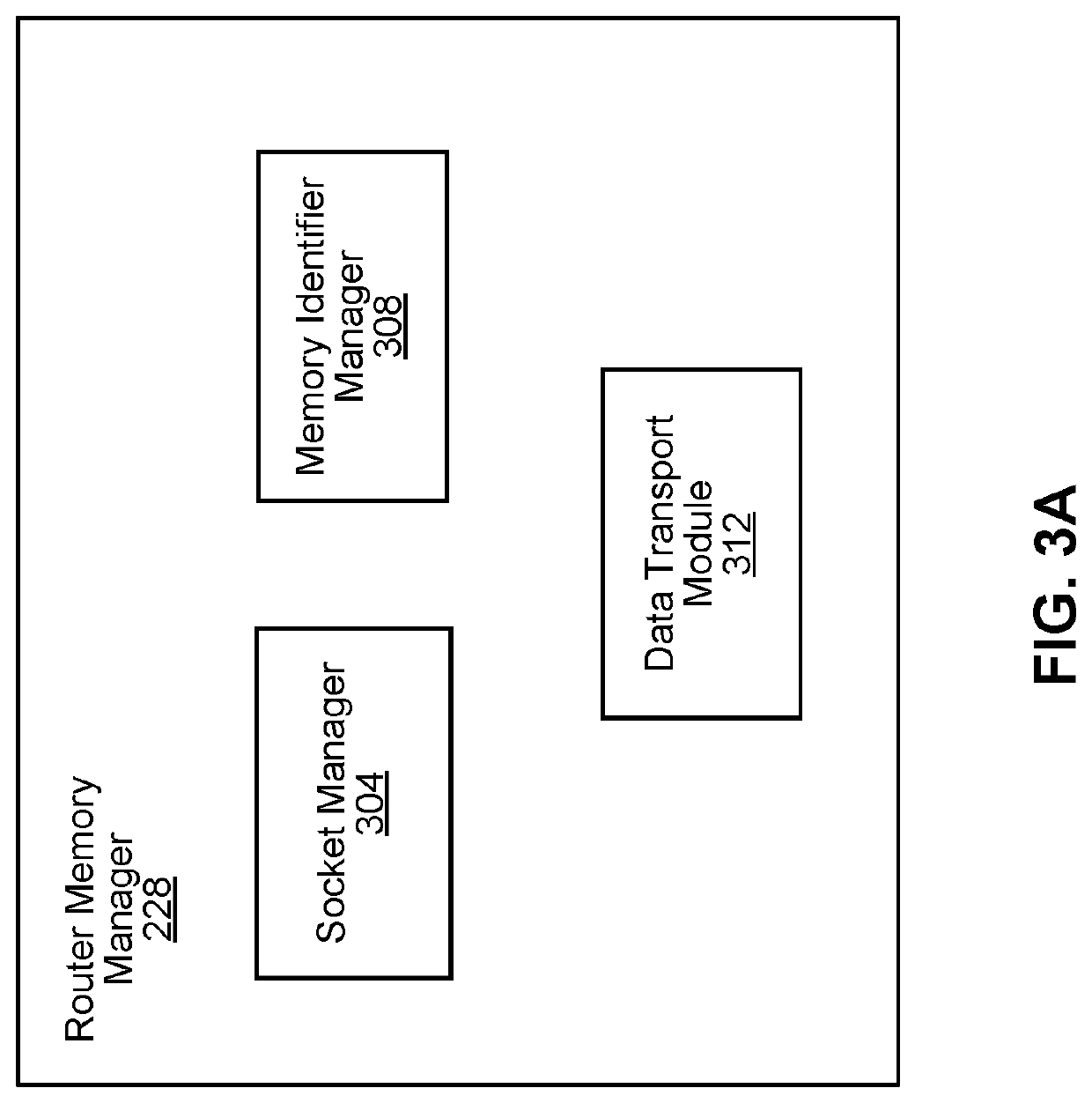Pipelined request processing using shared memory
a request processing and shared memory technology, applied in the field of web server architectures, can solve the problems of waiting too long, sitting idle, and unable to process new data in the queue,
- Summary
- Abstract
- Description
- Claims
- Application Information
AI Technical Summary
Benefits of technology
Problems solved by technology
Method used
Image
Examples
Embodiment Construction
Computing Environment Supporting Pipelined Request Processing Using Shared Memory
[0018]FIG. 1 is a high-level block diagram of a computing environment 100 supporting pipelined request processing using shared memory, according to one embodiment. FIG. 1 illustrates multiple client devices 104 and a web server 128 connected by a network 116. While only a few client devices 104 and one web server are shown in FIG. 1, embodiments of the computing environment 100 can have many such entities connected to the network.
[0019]FIG. 1 uses like reference numerals to identify like elements. A letter after a reference numeral, such as “140a,” indicates that the text refers specifically to the element having that particular reference numeral. A reference numeral in the text without a following letter, such as “140,” refers to any or all of the elements in the figures bearing that reference numeral. For example, “140” in the text refers to reference numerals “140a” and / or “140b” in the figures.
[0020...
PUM
 Login to View More
Login to View More Abstract
Description
Claims
Application Information
 Login to View More
Login to View More - R&D
- Intellectual Property
- Life Sciences
- Materials
- Tech Scout
- Unparalleled Data Quality
- Higher Quality Content
- 60% Fewer Hallucinations
Browse by: Latest US Patents, China's latest patents, Technical Efficacy Thesaurus, Application Domain, Technology Topic, Popular Technical Reports.
© 2025 PatSnap. All rights reserved.Legal|Privacy policy|Modern Slavery Act Transparency Statement|Sitemap|About US| Contact US: help@patsnap.com



